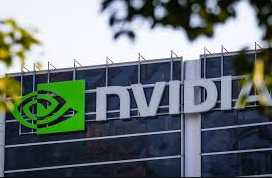
Nvidia posts strong revenue growth, driven by AI demand, with its data centre GPUs continuing to fuel the surge.
Nvidia has exceeded Wall Street’s revenue expectations for Q4 FY25, reporting a total of US$39.33 billion (S$52.76 billion), outperforming the forecasted US$38.05 billion. The company’s adjusted earnings per share (EPS) were US$0.89, surpassing the anticipated US$0.84. Despite these strong results, Nvidia’s stock remained flat in extended trading, as reported by CNBC.
For the quarter, Nvidia’s net income surged to US$22.09 billion, or US$0.89 per share, compared to US$12.29 billion, or US$0.49 per share, from the same period last year. However, the company’s gross margin saw a slight decline of three percentage points from the previous year, dropping to 73%. This reduction was attributed to the rising costs of newer, more complex products in its data centre line.
Looking ahead, Nvidia is forecasting a revenue of approximately US$43 billion for the first quarter of FY2026, marking a 65% annual increase, although lower than the 262% growth experienced in the same quarter last year. This projection exceeds analysts’ expectations of US$41.78 billion, indicating continued strong demand, particularly for its data centre graphics processing units (GPUs).
The surge in Nvidia’s performance is largely driven by the growing demand for its AI chips, with the company’s revenue increasing by 78% year-on-year for the quarter and 114% for the full fiscal year, reaching US$130.5 billion. In 2024, Nvidia’s revenue tripled in Q4, pushing the company past Apple and Microsoft to become the world’s most valuable company, a title it reclaimed in late January 2025. However, analysts have noted that the company’s growth has started to slow as it expands.
A major focus for Nvidia this year is the roll-out of its next-generation AI processors, Blackwell, with its latest AI chip generating US$11 billion in sales during Q4. CEO Jensen Huang referred to the demand for the Blackwell chip as “amazing” and highlighted the company’s success in ramping up production. He also noted that AI advancements are accelerating rapidly, with AI technologies set to revolutionise industries on a massive scale.
Nvidia’s CFO, Colette Kress, emphasised that Blackwell sales are expected to experience significant growth, describing it as the fastest product ramp in the company’s history. Large cloud service providers have been the primary drivers of sales, representing around 50% of Nvidia’s data centre revenue. As a result, Nvidia’s data centre division now accounts for 91% of its total revenue, up from 83% a year ago.
In Q4, Nvidia’s data centre business generated US$35.6 billion in revenue, a 93% increase from the previous year, surpassing analysts’ expectations of US$33.65 billion. This division has seen a tenfold increase in revenue over the past two years, primarily driven by AI-related demand.
While competition in the AI space intensifies, with some companies like DeepSeek in China using fewer Nvidia chips, the company remains confident in its market position. Nvidia believes that its new chips, like Blackwell, are crucial for advancing AI inference, which involves delivering AI software, a process that requires substantially more computational power than training.
Nvidia remains unfazed by the potential threat posed by custom chips from competitors such as Amazon, Microsoft, and Google. Jensen Huang expressed that having a chip design does not guarantee successful deployment, suggesting Nvidia’s dominance in the field remains strong.












